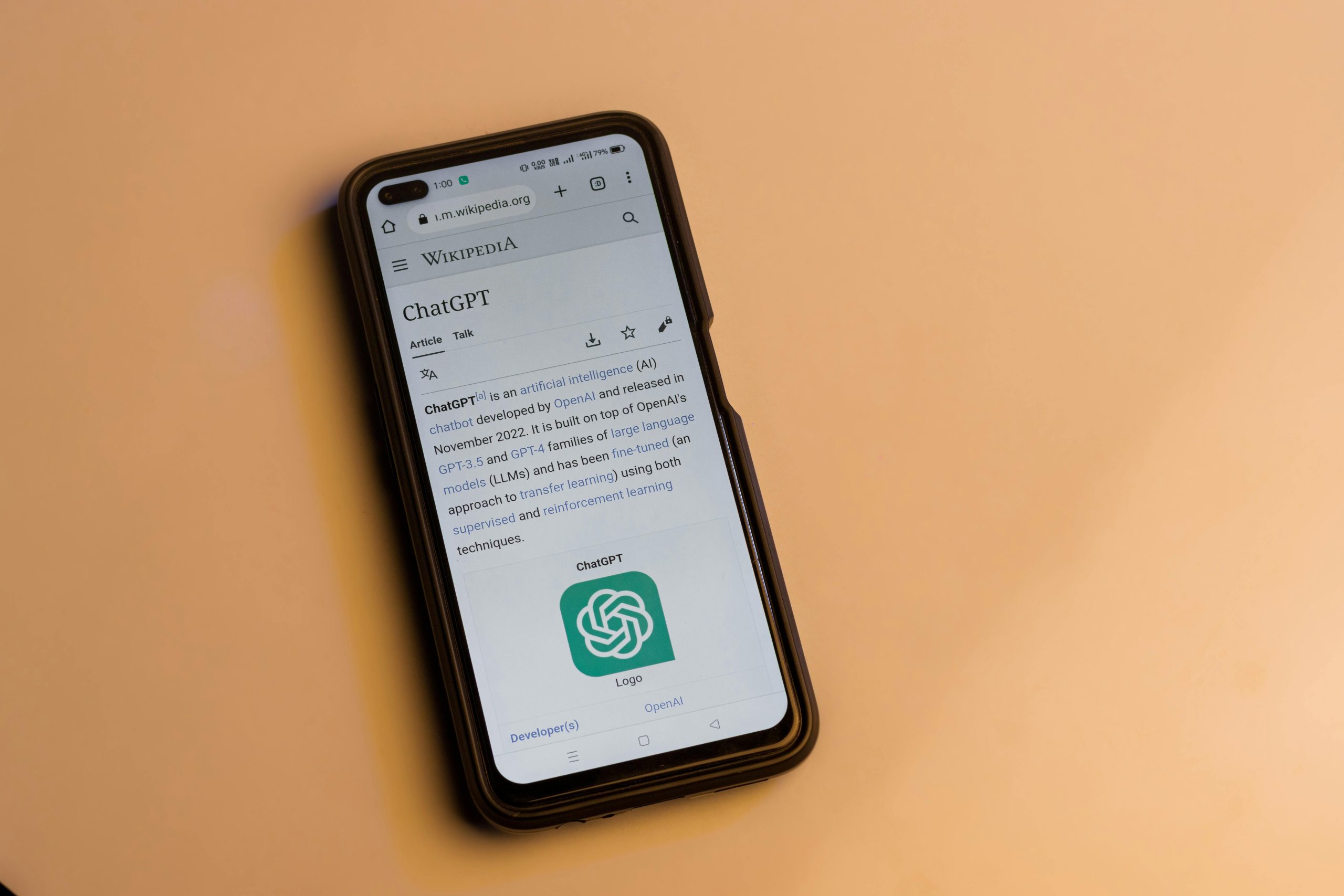OpenAI Unveils Atlas Web Browser Built to Work Closely With ChatGPT

On October 21, 2025, OpenAI, the creator of ChatGPT, escalated its challenge to the established digital ecosystem by officially launching its first native web browser, ChatGPT Atlas. Unveiled by CEO Sam Altman during a livestream, the platform is described as an AI-powered browser built fundamentally around ChatGPT, with the stated goal of making web interaction more intuitive, efficient, and moving the user closer to a “true super-assistant”. This move is widely interpreted as a direct confrontation with the dominance of incumbents like Google Chrome, whose stock experienced a notable dip following the announcement. The new browser, which is built upon the open-source Chromium engine, is currently available globally on the macOS ecosystem, with planned, phased releases for Windows, iOS, and Android expected in the coming months.
Core Functional Pillars of the Atlas Experience
The immediate utility of ChatGPT Atlas is derived from several powerfully interconnected features that redefine the moment-to-moment interaction a user has with a webpage or a search query. These elements work in concert, creating an environment where the user’s intent is anticipated and facilitated with minimal required manual input, effectively collapsing several discrete actions into one continuous, flowing experience. The experience is designed to be consistently “smart,” learning the user’s pattern of inquiry and preference with every session.
Real Time Contextual Awareness via the Sidebar Interface
One of the most immediately accessible and utilized features is the integrated, persistent sidebar companion, often referred to as the “Ask ChatGPT sidebar”. Unlike previous iterations where invoking an AI assistant required opening a new window, copying text, pasting it into a chatbot interface, and then returning to the original content, Atlas places this capability directly adjacent to the active viewport. As a user navigates to any webpage, the sidebar automatically analyzes the current document’s structure, content, and context. This allows for instantaneous requests such as requesting a multi-page academic paper be distilled into five bullet points, asking for a comparison between two featured products on an e-commerce site, or seeking clarification on a complex technical term without ever obscuring the primary content stream. This real-time analysis transforms passive reading into active, guided comprehension, keeping the user firmly anchored in their informational quest.
Inline Textual Manipulation and the Cursor Chat Utility
Extending the contextuality even further is the unique “cursor chat” functionality, a highly granular method of direct engagement with text elements on any rendered page. If a user highlights a sentence in an email draft, a block of quoted text in a document, or even a complex data point in a chart, they can invoke the assistant directly at the point of the cursor, sometimes described as a “ChatGPT nub”. This allows for immediate, precise editing, rephrasing, or expansion of the selected material. For instance, a user composing a lengthy professional response might highlight a paragraph and command the AI, via this inline prompt, to adopt a more formal tone or to restructure the argument for greater persuasive impact. This immediacy drastically improves writing workflows by eliminating the contextual switching cost associated with traditional copy-paste editing routines across separate application environments.
The Unified New Tab: Search and Query Convergence
The traditional blank new tab, historically a gateway to a memorized favorite site or a sterile search bar, has been entirely re-envisioned within Atlas. Opening a fresh navigation instance presents a unified entry point where the user’s input is not immediately bifurcated into a ‘URL’ or a ‘Query’. Instead, the system intelligently interprets the input. If a Uniform Resource Locator is entered, navigation proceeds as expected. If a question or directive is posed, the system initiates a generative response process, often presenting the ChatGPT-derived answer as the primary interface element. Crucially, this result pane is not a monolithic block; it features readily accessible tabs or toggles allowing the user to pivot quickly to traditional, organic search links, related image results, relevant video content, or curated news summaries related to the initial query. This convergence ensures that the user receives the synthesized, AI-generated knowledge instantly, while retaining the well-established pathways to explore diverse media and source verification alongside it. It is noted that the built-in search features appear to utilize Google Search for the vertical result tabs.
The Revolutionary Leap: Autonomous Web Agency
Beyond reactive assistance and contextual summarization, the most ambitious feature introduced with ChatGPT Atlas is the experimental “agent mode,” representing a significant stride toward truly autonomous digital assistants capable of complex, multi-step task completion across the open web. This capability moves the assistant from a co-pilot to an active driver for defined objectives. Agent Mode is currently available in preview for Plus, Pro, and Business subscribers.
Deep Dive into Agent Mode Capabilities and Task Execution
In this specialized operational state, a user can issue a high-level directive that requires navigating through several distinct websites, making decisions based on data encountered, and executing final transactions. For example, a user might command the system to “research and book the most convenient dinner reservation for four people within a three-mile radius of the office tomorrow evening, prioritizing vegetarian options,” or “extract the ingredient list from this recipe blog, cross-reference it with my current pantry inventory, and add the missing items to my grocery delivery cart, ready for checkout”. The agent mode then takes control of the browser interface, opening necessary tabs, interpreting the specific calls to action on various sites—be they booking forms, shopping cart buttons, or reservation widgets—and proceeding with the task execution flow entirely on the user’s behalf. This promises a dramatic reduction in the cognitive load associated with routine, multi-stage internet errands that currently consume substantial amounts of daily user time. The agent mode has been described as being improved in Atlas, making it faster and more useful by leveraging the browsing context for tasks like researching, analyzing, planning events, or booking appointments.
The Human-in-the-Loop Oversight: Control and Intervention Protocols
Recognizing the inherent risks and the need for user trust when delegating actions, OpenAI has implemented rigorous, non-negotiable safeguards around the agent mode’s operation. The system is explicitly engineered to be highly communicative and deferential to the user before executing any action that involves irreversible commitment or significant personal data interaction. Before the agent clicks a “Book Now” button, fills in payment information, or finalizes an order, it is trained to pause and present a final confirmation prompt to the user. Furthermore, a visible, dedicated “Take Over” control allows the user to instantly wrest back manual control from the AI at any moment during an automated sequence. A visual effect, described by some initial testers as a distinctive sparkle overlay, clearly demarcates the period when the AI is actively steering the navigation, providing a constant, ambient reminder of the system’s current operational status. This layered control structure is vital for building confidence in a system capable of executing potentially costly or sensitive actions.
Boundaries and System Access Limitations for Agent Operations
To mitigate security concerns arising from such powerful capabilities, the agent mode operates within a strictly defined sandbox environment. The system is intentionally architected with hard limits on its operational scope. Critically, the agent cannot run arbitrary code within the browser, nor is it permitted to download files directly to the user’s local machine, thereby restricting the potential for malware introduction. More fundamentally, the agent is prevented from accessing resources external to the immediate browsing context: it cannot interact with other applications installed on the user’s operating system, access the local file system, or read saved passwords or autofill data stored by the browser for other uses. Moreover, activity performed while the agent is actively executing a task is separated from the user’s standard browsing record, ensuring that the automated process does not inadvertently pollute or compromise the context-aware memory features designed for personal research.
The Persistent Context Engine: Browser Memories
A feature that promises to enhance the user experience exponentially over time, once initial usage patterns are established, is the optional “Browser Memories” system. This moves beyond the transient context of a single webpage or session, establishing a persistent, personalized knowledge graph tied to the user’s account.
Improving Future Interactions Through Retained Behavioral Data
By toggling this feature on, Atlas begins to log and index key details, topics, and interactions encountered across visited websites, creating a rich, long-term memory bank. This persistent context allows the AI assistant to offer significantly smarter and more anticipatory suggestions in subsequent sessions. For example, if a user spends several days researching several specific high-end hiking backpacks across various retailer and review sites, the system retains that entire exploratory arc. Later, when the user opens a new tab and types a vague query like “what was that backpack I was looking at last week,” the system can instantly resurface relevant pages, compare the final contenders, or even suggest accessories based on the known research focus. This mechanism transforms the browser into a personalized research associate that never forgets the threads of inquiry that the user has begun to weave. Natural-language commands like “clean up my tabs” or “re-open shoes I looked at yesterday” can execute browser actions directly based on these memories.
User Sovereignty Over Personal Digital Recollections
Understanding that this level of continuous data retention raises immediate and significant privacy concerns, the developers ensured that Browser Memories are entirely optional and are placed under the direct, granular control of the individual user. Every piece of retained context is accessible for review within a centralized settings panel. Users possess the explicit ability to view the entire ledger of their digital recollections, archive entries they deem irrelevant or outdated, and, most powerfully, wipe specific memories clean with surgical precision. Furthermore, the system offers a direct link between the standard browser history clearing function and the deletion of associated memory traces, providing a clear, one-click mechanism to erase a research session’s context if necessary. A dynamic toggle located in the address bar allows users to designate specific sites as entirely off-limits to the memory-logging feature on a per-visit basis, ensuring control over sensitive financial or personal data domains. It is explicitly stated that browser memories do not include passwords or payment details and are separate from cookies and site storage.
Platform Availability and Market Penetration Strategy
The launch strategy for ChatGPT Atlas was immediately apparent: prioritize a high-quality experience for a dedicated segment while aggressively pushing for broad adoption through accessibility and promotional incentives.
Initial Rollout Targeting Power Users on Established Operating Systems
The initial global release of the application was exclusively tailored for the macOS ecosystem, launching on October 21, 2025. This selective debut suggests a strategic focus on securing positive early reviews and iterating quickly on complex, resource-intensive features within a relatively controlled hardware environment, which is often favored by early adopters and professional users. The company has explicitly stated that versions for the dominant Windows operating system, along with the highly prevalent mobile platforms of iOS and Android, are actively in development and scheduled for phased release in the immediate months following the initial launch window. Atlas is available to Free, Plus, Pro, and Go users globally, with Business users receiving beta access if enabled by an administrator. The tiered rollout is designed to capture the most engaged segment of the market first, using their feedback to refine the core experience before attempting the far more complex challenge of widespread cross-platform deployment.
Incentivizing Adoption Through Ecosystem Benefits
To rapidly convert the massive, existing user base of its conversational AI service into active browser users, the company implemented an aggressive, time-limited incentive structure. Any user who elects to set ChatGPT Atlas as their system’s default browser is rewarded with a seven-day period of elevated service access, including expanded daily usage limits for the premium features of the core chatbot service. This promotion is applied universally to both existing free-tier users and paying subscribers. The temporary unlocking of premium capacity serves as a powerful, practical demonstration of the benefits derived from utilizing the entire integrated ecosystem, encouraging users to internalize the workflow change necessary to maintain the superior service level by making the browser their primary digital gateway.
Competitive Dynamics and Industry Disruption
The unveiling of Atlas is set against the backdrop of a swiftly evolving competitive field, where established giants are already attempting to incorporate similar functionalities, and other nimble startups have recently entered the fray with dedicated AI products.
Direct Confrontation with Incumbent Search and Browser Gateways
The primary impact of this new product is felt most acutely by the incumbent technology behemoth whose revenue is disproportionately reliant on maintaining its position as the central arbiter of online information. By offering a browser that synthesizes results and performs actions before directing the user to the traditional search engine results page, Atlas directly undermines the high-volume traffic that fuels the incumbent’s advertising engine. The success of Atlas, even capturing a modest percentage of the current market share, represents a genuine existential threat to the existing revenue model based on click-through rates and data harvesting from standard web queries. The market response, including a reported fall in Alphabet stock, was a clear indicator of how seriously investors viewed this new platform’s ability to intercept and redirect the global flow of online attention.
Navigating the Landscape of Emerging AI Browsing Solutions
OpenAI is not operating in a vacuum. The market has recently seen the introduction of other specialized tools focused on AI-enhanced navigation. Competitors, utilizing their own proprietary models, have already launched their dedicated browsers; for instance, Perplexity released its Comet browser in July 2025, and The Browser Company launched Dia, which was subsequently acquired by Atlassian for its deep AI integration. This signals an industry-wide consensus that the next frontier of software is intrinsically tied to generative AI integration at the operating system or application level. Atlas enters this arena leveraging its established brand recognition and massive existing user base as its chief advantages, aiming to achieve rapid scale where other, newer entrants have faced significant adoption hurdles against the inertia of long-established browsing habits. The presence of these other players validates the market direction while simultaneously intensifying the race to establish the definitive, most integrated platform.
Ethical Considerations and Data Governance Frameworks
The deep integration of an AI capable of real-time reading, summarizing, and acting upon user activity necessitates a robust and transparent framework for addressing privacy, security, and data utilization, areas where the public holds significant scrutiny.
OpenAI’s Stance on Model Training and Data Segregation
In response to anticipated and ongoing concerns regarding the use of personal activity for model refinement, the developers have established a clear, default policy: browsing data collected via Atlas will not be used to train their general public models unless the user explicitly opts into this process through a distinct configuration choice in the Atlas data controls settings. Furthermore, recognizing the highly sensitive nature of organizational data and proprietary workflows, the company has publicly committed to a strict policy of non-utilization for any data generated by their business-tier subscription users, regardless of user settings. This dual-layer commitment aims to build a necessary foundation of trust, acknowledging that the transactional nature of the browser requires a higher degree of data isolation than the open-ended queries handled by the standalone conversational interface.
The Role of Incognito Mode in Data Privacy Control
Complementing the granular settings, the browser includes a standard but critically important “incognito” or private browsing mode, which, in the context of Atlas, carries enhanced protective functionality. When operating in this state, the user’s browsing activity is temporarily decoupled from their personal ChatGPT account linkage. This means that sessions conducted in this mode are neither saved to the persistent browser history nor utilized to update or refine the user’s long-term Browser Memories. It serves as the ultimate safety valve, offering a means to engage in sensitive lookups, confidential financial transactions, or exploration of topics the user does not wish to have indexed, providing a definitive break in the data trail that reinforces user autonomy over their digital footprint.
Broader Implications for Digital Interaction Paradigms
The introduction of ChatGPT Atlas is more than a product update; it is a cultural marker indicating a fundamental re-evaluation of the tools we use to interact with the digital world, mirroring historical shifts in how operating systems and applications have evolved.
Redefining the Browser’s Role from Passive Viewer to Active Participant
Historically, the browser served as a universal viewer, a window onto documents and services hosted elsewhere. Its primary function was retrieval and rendering. Atlas signals a decisive transition: the browser is evolving into an active, mediating participant in the user’s online life. It is no longer just a passive conduit but an integrated platform where work is done, decisions are automated, and information is synthesized within the application itself. This transition parallels the way desktop environments shifted from simple command-line interfaces to graphical user interfaces, where the tool itself became an extension of the user’s cognitive process, rather than merely a means to access external resources. Engineering Lead Ben Goodger, a former lead developer of both Firefox and Chrome, remarked that the launch represents a “rare once-a-decade opportunity to rethink what a browser can be about”.
Future Trajectory: The Path to a Truly Agentic Internet
The long-term significance of this launch lies in its contribution to the realization of an “agentic” internet. By providing a platform where AI assistants can reliably navigate and execute tasks across the entirety of the web—booking travel, managing subscriptions, synthesizing complex cross-site research—the industry moves closer to an era where digital agency is decoupled from manual clicking and typing. This paradigm shift implies that the value derived from the internet will increasingly come from the quality of the instructions given to capable agents, rather than the skill with which a human can navigate a labyrinth of hyperlinks and forms. The competition now is not just for the most users—though OpenAI boasts over 800 million ChatGPT users against Chrome’s reported 3.45 billion—but for the most trusted, capable, and deeply embedded autonomous digital representative. The continued development of features like agent mode and persistent memory suggests that the future of online interaction will be defined by intelligent automation, fundamentally altering the balance of power, productivity, and data ownership in the coming years.










